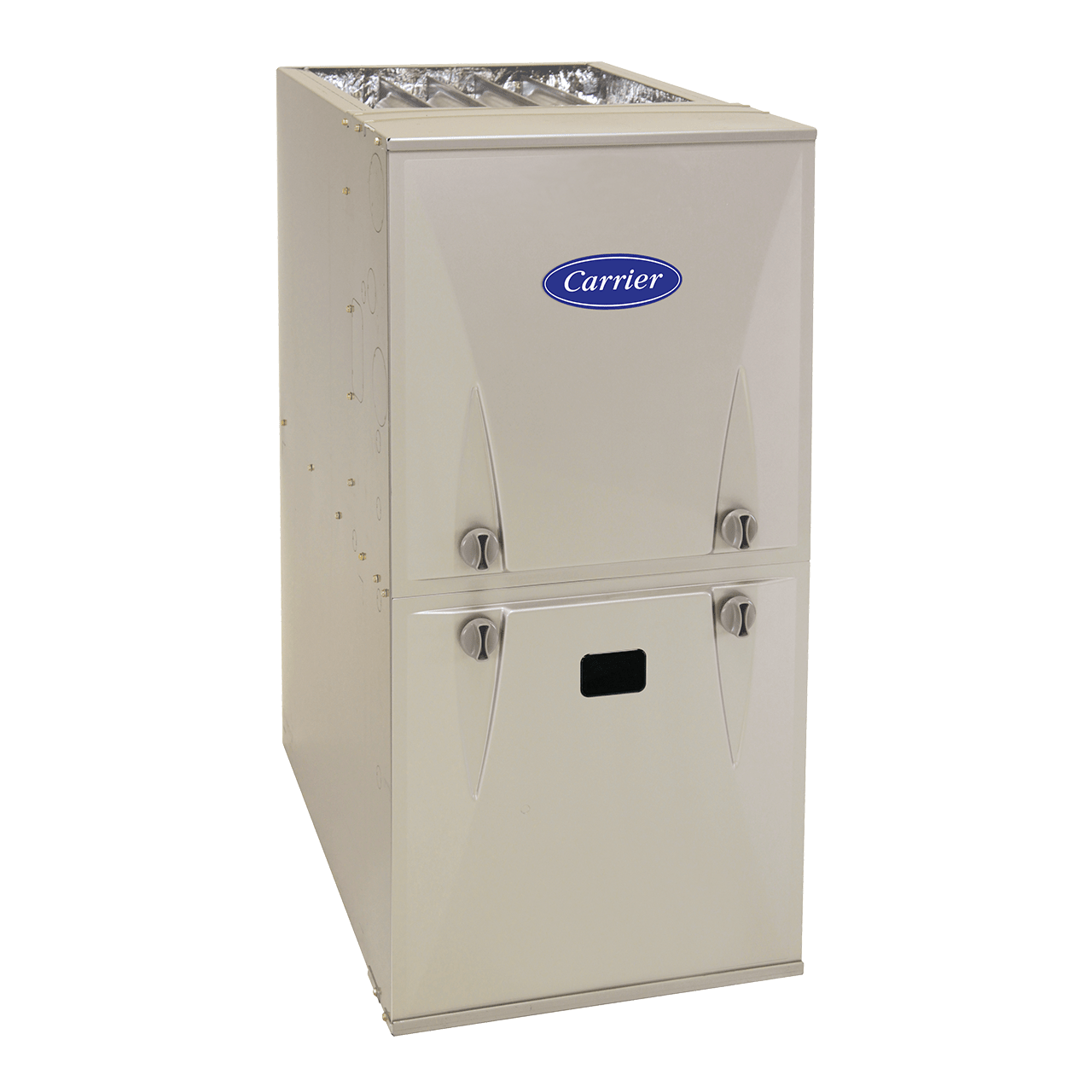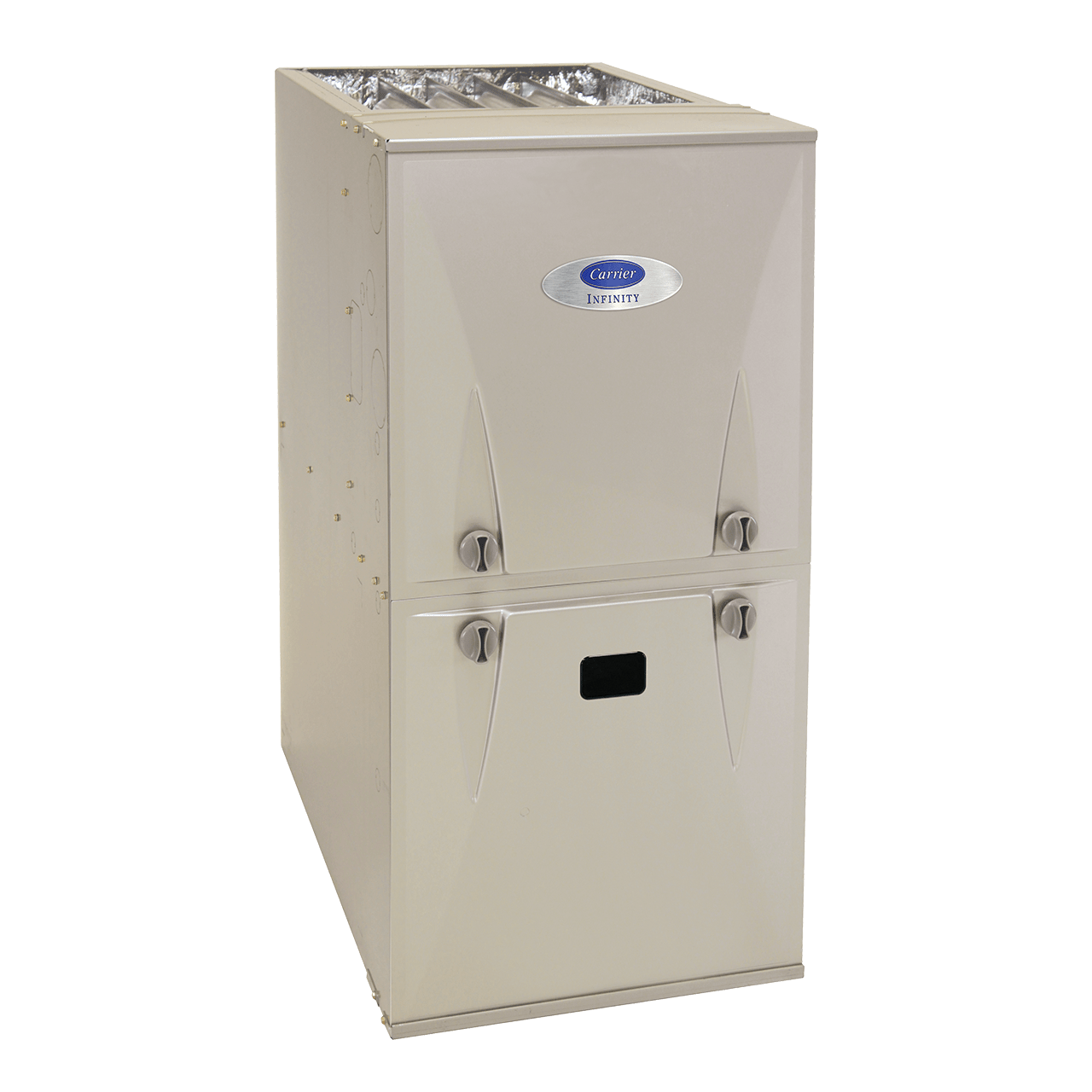
Fournaises pour la maison
La fournaise est le cœur de votre maison : hors de la vue, presque oubliée, elle assure cependant le confort de votre famille tout au long de l'année. Nos fournaises silencieuses et écoénergétiques sont conçues pour vous garder au chaud en hiver et pour faire circuler de l'air propre et rafraîchissant de votre système de climatisation en été.
Découvrez nos fournaises
Homologué ENERGY STAR®. Notre fournaise la plus efficace et la plus évoluée, offrant une efficacité AFUE jusqu'à 98,5 % pour des économies d'énergie supérieures avec un excellent contrôle de l'humidité et un confort supérieur
Coût initial $$$

Homologué ENERGY STARMD. Efficacité AFUE jusqu’à 96,7 % pour des économies d’énergie haut de gamme avec des caractéristiques de confort améliorées.
Coût initial $$$

Homologué ENERGY STARMD. Efficacité AFUE jusqu'à 96,5 % pour des économies d'énergie haut de gamme avec des caractéristiques de confort améliorées.
Coût initial $$

Homologué ENERGY STARMD. Efficacité AFUE jusqu'à 96,5 % pour des économies d'énergie haut de gamme avec des caractéristiques de confort de série.
Coût initial $$

Les modèles de toutes les capacités sont homologués ENERGY STARᴹᴰ. Cote AFUE jusqu’à 97 % pour des économies d’énergie haut de gamme avec des caractéristiques de confort de série.
Coût initial $
Lorsqu'il s'agit de choisir une fournaise pour la maison, nous offrons différentes options pour que vous puissiez décider ce qui convient à votre confort et à votre budget. Une fournaise à étage unique avec circulation d'air activée ou désactivée procure un niveau de confort de base. Un modèle à deux étages vous offre plus de contrôle, avec des options de chauffage à étage élevé et bas, et permet d'obtenir un confort plus constant. Nos fournaises modulantes vous offrent le contrôle de la température le plus précis et les meilleures fonctions de confort.
Un taux d'humidité constant dans votre maison peut grandement améliorer votre confort. Le jumelage d'une fournaise Infinity à un climatiseur à vitesse variable peut offrir le meilleur contrôle de l'humidité pendant l'été et un confort chaud pendant l'hiver.
Les fournaises avec chauffage modulant et à deux étages offrent un fonctionnement très silencieux comparativement aux modèles avec chauffage à étage unique. De plus, les modèles dotés d'enceintes entièrement isolées peuvent réduire davantage le niveau de bruit. Si votre appareil de chauffage est situé dans un placard ou près d'un espace de vie occupé, la qualité sonore pourrait être un facteur important à prendre en considération.
Les fournaises pour la maison sont classées en fonction de leur rendement énergétique annuel (AFUE). La cote AFUE d'une fournaise ressemble beaucoup à la consommation en carburant d'une voiture mesurée en kilomètres par litre : plus la cote AFUE est élevée, plus le système est écoénergétique.
Puissante technologie de précision pour les fournaises
Si vous regardiez sous le capot d'une fournaise au gaz Carrier, vous pourriez voir ce qui influence son rendement : un engagement sérieux envers la qualité et une technologie de précision. Selon le modèle, il se peut que vous trouviez une soupape à gaz modulante qui peut être ajustée par paliers de 1 %. Les modèles dotés d'un moteur de soufflerie et d'évacuateur à régime variable peuvent fournir un contrôle constant de la température tout au long de l'année et un meilleur contrôle de l'humidité, dans le cadre de votre système de climatisation. Nos fournaises au gaz avec une cote AFUE de 90 % et plus comprennent deux échangeurs thermiques : un échangeur thermique principal qui effectue la majeure partie du travail et un échangeur thermique secondaire qui extrait de la chaleur supplémentaire pour une efficacité et un confort supérieurs. Et, pour un démarrage et un chauffage fiables, tous les modèles sont dotés de notre allumeur breveté PowerHeat.
Les fonctions supplémentaires d'amélioration du confort de certains modèles comprennent la technologie Ideal Humidity SystemMD pour soulager des effets de l'air chaud et collant, ainsi que la technologie ComfortFan, qui vous permet de sélectionner la vitesse du ventilateur de fournaise à partir de la commande du système Infinity. Les fournaises Carrier combinent qualité et rendement dans un boîtier durable, attrayant et compact. Et si la mention « boîtier compact » vous fait penser à la question « de quelle dimension de fournaise ai-je besoin? », vous avez de la chance! Votre expert Carrier local peut choisir la bonne dimension et installer la fournaise au gaz Carrier qui vous convient le mieux.
Types de fournaises à air forcé
Lorsque vous recherchez une nouvelle fournaise, n'oubliez pas que les modèles ne sont pas tous égaux. La plupart des modèles à air forcé sont classés en deux catégories selon leur source de carburant, le gaz naturel ou le mazout. Dans la plupart des cas, la décision entre le gaz naturel et le mazout de chauffage est déjà prise en fonction de la source de carburant disponible dans votre maison. Si vous pouvez choisir entre une fournaise au gaz naturel ou au mazout, tenez compte des différences de coût entre les fournaises elles-mêmes de même que du prix du gaz naturel par rapport à celui du mazout. Le coût initial de votre fournaise peut être une dépense requise tous les 10 à 15 ans, alors que la source de carburant représente un coût mensuel récurrent.
Fournaises à condensation
Toutes les fournaises sont munies d'un échangeur thermique qui convertit les gaz de combustion en chaleur pour votre maison. Les modèles à condensation utilisent un échangeur thermique secondaire qui extrait de la chaleur supplémentaire des gaz de combustion pour atteindre une efficacité énergétique AFUE de 90 % ou mieux. La plupart des modèles de série avec un seul échangeur thermique offrent une efficacité AFUE d'environ 80%.
Ma fournaise peut-elle utiliser du propane?
De nombreuses fournaises au gaz Carrier offertes actuellement peuvent être converties pour utiliser du propane. Le processus comprend le remplacement des orifices des brûleurs, l'installation de vis de déflecteur, l'installation d'un interrupteur à basse pression de gaz et plusieurs réglages supplémentaires. Il s'agit d'un travail pour votre expert local et professionnel en CVC de Carrier, et certainement pas pour un bricoleur typique. Pour en savoir plus sur les fournaises au propane et les conversions de fournaises, cliquez sur le lien sur les fournaises au propane.
Étages de fournaise
Les fournaises à air forcé modernes sont offertes en modèles à étage unique, à deux étages ou à plusieurs étages. Pensez aux étages de chauffage comme aux vitesses d'un vélo ou d'une voiture. Les modèles à étage unique sont comme les vélos à pignon fixe. C'est excellent sur une route plane, mais ça demande beaucoup plus d'énergie pour monter une pente abrupte. Les modèles à deux étages ajoutent une deuxième vitesse, une pour répondre aux besoins quotidiens en matière de chauffage et une deuxième vitesse pour fournir un chauffage supplémentaire au besoin. Les fournaises à plusieurs étages ou à étages modulants sont comme un régulateur de vitesse sur votre voiture, s'ajustant à la hausse ou à la baisse au besoin pour offrir confort et efficacité lorsque les conditions météorologiques changent.
Des fournaises pour toutes les maisons et tous les budgets
Lorsque vous vous tournez vers les experts de Carrier pour vos besoins en système de chauffage à domicile, vous trouverez une sélection complète de fournaises au gaz naturel et au mazout conçues pour convenir à toutes les maisons et à presque tous les budgets. Bien sûr, le coût d'une nouvelle fournaise reflète souvent les avantages qu'elle procure en matière de confort, de rendement et de durée des garanties. Pour ceux qui recherchent le nec plus ultra, nos modèles haut de gamme de la série InfinityMD proposent la plus grande efficacité et les fonctions de confort les plus novatrices que nous offrons, un fonctionnement plus silencieux et un contrôle amélioré de l'humidité estivale dans le cadre de votre système de climatisation pour la maison.
Si vous aimez les avantages haut de gamme à un prix plus modeste, nos modèles de la série Performance offrent le meilleur des deux mondes. Si vous vous souciez des coûts, nos unités de la série Comfort plus économiques peuvent tout de même atteindre un rendement élevé grâce à la qualité, au soutien et à l'engagement de l'inventeur de la climatisation moderne, Carrier.
Fournaises à rendement élevé
Vous pouvez comparer l'efficacité des modèles de fournaises de différents fabricants au moyen de leur cote AFUE respective : plus la cote AFUE est élevée, meilleure est l'efficacité. Les fournaises à efficacité élevée actuelles peuvent avoir une cote AFUE jusqu'à 98,5 %, ce qui peut réduire les coûts des services publics au cours de la durée de vie de la fournaise. Dans de nombreux cas, nos fournaises Carrier à rendement élevé sont également munies de technologies qui peuvent offrir des avantages accrus en matière de confort et un fonctionnement plus silencieux.
